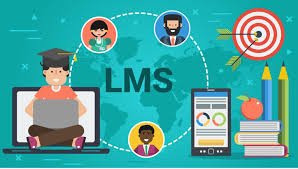In today’s digital world, educational institutions and organizations are constantly seeking efficient ways to deliver, track, and manage learning experiences. One of the most powerful tools that support this goal is a learning management system. This software solution has revolutionized the way training and education are administered across the globe.
Understanding the Concept of a Learning Management System
A Learning Management System (LMS) is a software application or web-based technology used to plan, implement, and assess a specific learning process. It is often used in e-learning practices and can be hosted as a standalone product on the company server or as a cloud-based platform hosted by a software firm.
The LMS helps instructors deliver content, monitor student participation, and assess performance. It also allows students to access course material anytime and anywhere. This makes it a valuable tool for both academic institutions and corporate environments.
Core Functions of a Learning Management System
A well-designed LMS simplifies the process of learning and development in several ways. Here are the core functionalities most systems offer:
-
Course Management: Enables the creation, management, and organization of training materials.
-
User Registration and Management: Manages learners’ data, roles, and access.
-
Content Delivery: Facilitates the distribution of educational content in various formats such as text, audio, video, and PDFs.
-
Assessment Tools: Provides quizzes, assignments, and exams to evaluate learner progress.
-
Tracking and Reporting: Offers real-time analytics on learner performance and course effectiveness.
-
Certification: Generates certificates or badges upon completion of training or passing an exam.
Types of Learning Management Systems
There are different types of LMS platforms, each suited for specific needs. Understanding these types can help institutions and businesses choose the right fit:
1. Cloud-Based LMS
Hosted on the cloud, this type of LMS is accessible from any device with an internet connection. It requires no installation or in-house IT support.
2. Self-Hosted LMS
Installed and maintained on an organization’s own server. It provides more control but also requires in-house technical resources for updates and security.
3. Open-Source LMS
Free to use and customizable. Organizations can modify the software according to their needs, but technical expertise is essential.
4. Commercial LMS
Offered by private companies with dedicated customer support and regular updates. These are typically paid services but offer robust features.
5. Enterprise LMS
Designed for large organizations and includes features such as scalability, integration with HR systems, and multilingual support.
Benefits of Implementing a Learning Management System
Using a learning management system comes with a host of advantages that enhance both teaching and learning experiences:
-
Centralized Learning: All course content and learner data are stored in one place.
-
Scalability: Ideal for organizations with growing training needs.
-
Accessibility: Learners can access material anytime, on any device.
-
Cost-Effective: Reduces expenses related to travel, classroom rental, and printed materials.
-
Customization: Tailors learning paths to suit different learners.
-
Consistent Training: Ensures uniformity in delivering content across departments or campuses.
Common Use Cases for Learning Management Systems
LMS platforms are used in a wide range of settings. Here are some common use cases:
1. Educational Institutions
Schools, colleges, and universities use LMS to support blended or fully online courses, manage curriculum, and monitor student progress.
2. Corporate Training
Businesses implement LMS for onboarding new employees, compliance training, skill development, and leadership training.
3. Non-Profit Organizations
LMS platforms help deliver community education, volunteer training, and program-specific learning initiatives.
4. Government Agencies
Used to train staff on regulatory updates, policies, and procedures.
Key Features to Look for in a Learning Management System
When choosing an LMS, there are essential features to consider to ensure you select a solution that aligns with your learning goals:
-
User-Friendly Interface: Should be intuitive for both learners and administrators.
-
Mobile Compatibility: Must support mobile learning for remote or on-the-go users.
-
Assessment Tools: Offers flexible testing options.
-
Integration Capabilities: Should integrate easily with HR systems, CRMs, and other platforms.
-
Customization Options: Allows branding and personalized learning paths.
-
Security and Privacy: Compliant with data protection laws and includes role-based access controls.
How a Learning Management System Supports Remote and Hybrid Learning
The rise of remote and hybrid learning models has made the LMS more important than ever. Here’s how it supports these formats:
-
Virtual Classrooms: Allows for live sessions and webinars.
-
On-Demand Learning: Enables learners to complete courses at their own pace.
-
Collaborative Tools: Discussion forums, chats, and file sharing foster interaction.
-
Progress Monitoring: Instructors can track individual learner activity and intervene when needed.
Common Challenges and How to Overcome Them
Despite their benefits, LMS platforms can come with challenges:
-
User Resistance: Change can be met with reluctance. Training and clear communication help ease the transition.
-
Technical Issues: Regular maintenance and updates are necessary.
-
Content Overload: Simplify courses with structured content and engaging formats.
-
Low Engagement: Use gamification, badges, and certificates to motivate learners.
Future Trends in Learning Management Systems
LMS technology continues to evolve. Below are some trends shaping the future of online learning:
-
Artificial Intelligence: Adaptive learning paths and personalized content recommendations.
-
Microlearning: Short, targeted lessons to boost retention.
-
Gamification: Leaderboards, points, and badges to enhance engagement.
-
Analytics and Reporting: Predictive analytics to improve outcomes.
-
Mobile-First Design: Prioritizing mobile access to learning content.






